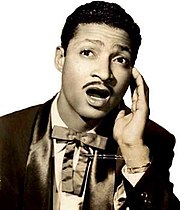
As we approach Beny Moré's birthday and our anniversary, I can't help but enjoy the classic Latin music of the Cuban Crooner.
Beny Moré appears as a character in the novel The Island of Eternal Love Penguin Random House, 2008, by Cuban-American writer Daína Chaviano, who also concludes her novel with a chapter entitled "Today as Yesterday", one of the best interpretations of this singer. Moré is also remembered in the 2006 film, El Benny, which is based on parts of his life, and includes new versions of his songs performed by musicians including Chucho Valdés, Juan Formell, and Orishas.
Numerous tribute albums consisting of cover versions of Moré's songs have been released by artists such as Tito Puente 1978, 1979, and 1985, Charanga de la 4 1981, Bobby Carcassés (1985), Tropicana All-Stars (2004) and Jon Secada (2017)
The name Benny Moré was a smash hit in CUBA. Before Desi Arnaz - Lucy Ricardo and Ricky Ricardo perform Cuban Pete
Benny More & Daniel Santos Full Movie Serie de mi coleccion
El Benny La Pelicula 2006 Mejor calidad
https://www.youtube.com/watch?v=il9QDei_TzQ
During the spring of 1952, around April, Moré returned to Cuba. He was a star in Mexico, Dominican Republic, Panama, Colombia, Brazil, and Puerto Rico, but was virtually unknown on the island. His first Cuban recordings were with Mariano Mercerón & his Orchestra, including songs like "Fiesta de Tambores", "Salomón", "La Chola", etc. Moré began alternating between performances in the Cadena Oriental radio station and trips to Havana to record at the RCA studios in CMQ Radiocentro.
In Havana, Moré worked for the radio station RHC-Cadena Azul, with the orchestra of Bebo Valdés, who introduced the new style called "Batangas". The presenter of the show, Ibraín Urbino, presented him as El Bárbaro del Ritmo. They offered him the opportunity to record with Sonora Matancera, but he declined the offer because he did not care for the sound of the group. After the Batangas fell out of fashion, Moré was contracted by Radio Progreso with the orchestra of Ernesto Duarte Brito.
In addition to the radio, he also performed at dances, cabarets, and parties. When he sang in Havana's Centro Gallego, people filled the sidewalks and the gardens of the Capitolio to hear him. In 1952, Moré made a recording with the Orquesta Aragón with whom he would perform in dance halls. Orquesta Aragón was from Cienfuegos and was having trouble breaking into Havana and Moré helped them in this way.